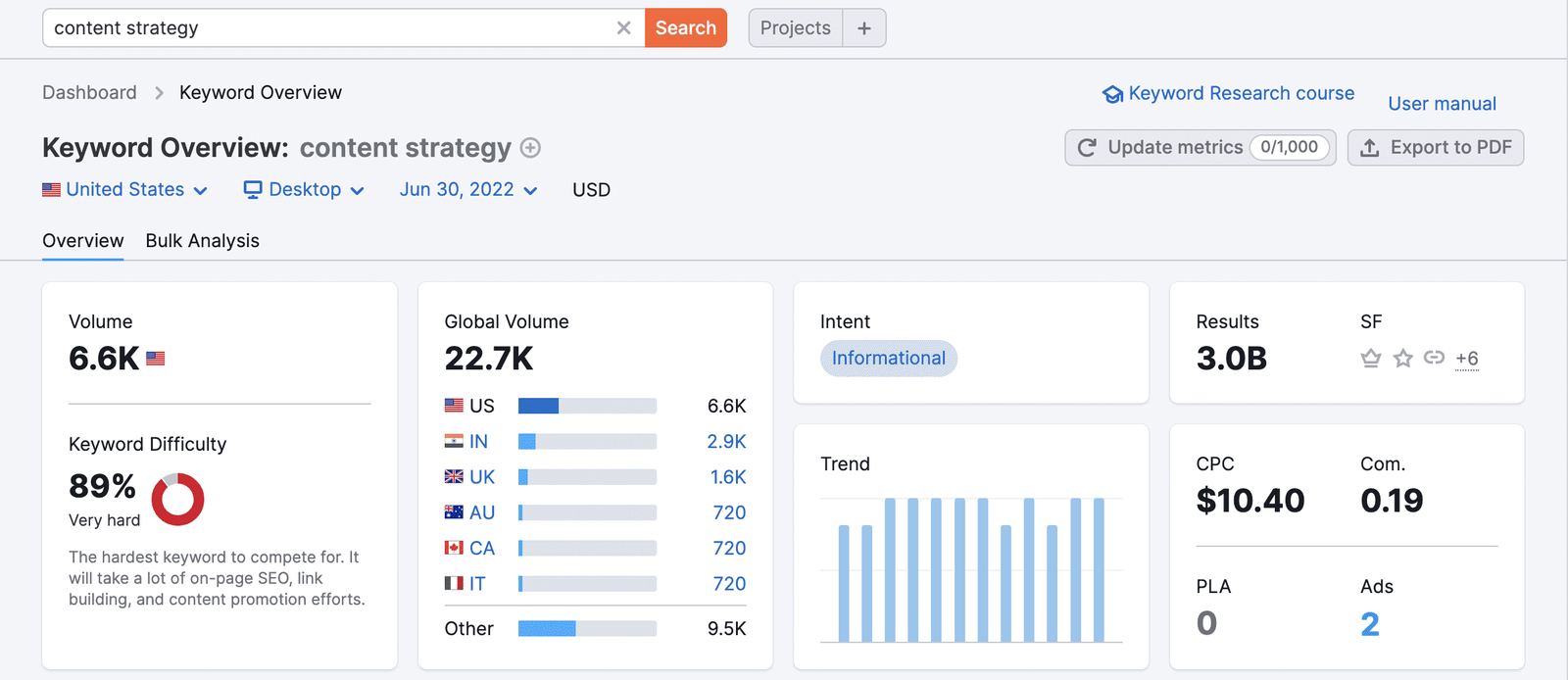Stuffing content with keywords or building links impulsively will not help you rank on SERPs in 2022. However, a full-fledged SEO strategy will help you improve your visibility on Google.
But here’s the thing, with Google updates coming in so rapidly and the search engine getting even more user-cautious, framing an effective SEO strategy has become a task.
Google, in 2022 will rank websites with a comprehensive database of content pieces on specific subjects instead of pushing for domains with low-quality keyword-stuffed content.
If you want Google to be your friend in this journey, you need to be versed with the topic cluster SEO strategy– which is exactly what experts are using today to help businesses rank on search queries.
With this agenda in mind, let’s get started with the basics first.
What is topic cluster in content?
Think of a topic cluster as a spider web; several content pieces created around a central theme i.e., a pillar page, are interlinked so readers are retained for longer durations. To understand this better, look at the image below.


For instance if you are an SEO agency, you can keep SEO as your core theme with technical SEO, Off-page SEO and On-page SEO as your subtopics.
Mostly there are three major elements of a topic cluster strategy-
- The pillar page
- Cluster content pages
- And hyperlinks
The pillar page usually comprises an overview of the core topic which is interlinked with the content created around the subtopics for more in-depth information. Which is how the key three elements work together to improve your website’s visibility and authority.
How to make clusters around pillar content?
1. Understand your ultimate goal
First step is to figure out why you need a more specific and efficient SEO content strategy in the first place. Without knowing that you would just be shooting without an aim.
For instance if you are a SaaS company, you would want to create authentic and valuable content around your niche that answers questions of your audience. This way you can portray yourself as an authority in the industry and through the developed trust you can generate leads.
Similarly, figure out your “why” and from there start building a strong foundation for the same.
2. Audit published content
If you have content published on your website then the next step is to audit and categorise the same. If not, then you should skip to the third one directly.
The content that’s available should be bifurcated into subcategories that will on the later stage become cluster pages. Moreover, you can also add to the available content at this stage – updating content is a good way to improve domain authority.
3. Perform thorough keyword research


Now that you’ve audited the website content, you must have some idea as to which keywords your website is ranking on currently. Similarly, you have to execute an in-depth keyword research to understand which keywords you want to focus your entire strategy on.
These same keywords can hint you about the topics of cluster pages too.
4. Choose a pillar page
Now at this stage you must have a few cluster pages along with the keywords on which you would like to expand the same. Now what you need to do is find a pillar page that will link to all these clusters.
All you have to make sure is that the pillar page is broader in scope and it hints to the cluster pages evidently so you can link the two. You can create one from scratch or choose to update an existing article that has the potential to touch the clusters.
5. Interlink to pillar page
Now is the time to complete the spider web of content by linking them with each other. Link each cluster page to pillar page and vice versa to finally have a web of topic clusters.
Benefits of using topic clusters in seo
1. Better content planning
Creating a content cluster for your website requires a lot of work including auditing, research and analysing. Doing all this will give you an upper hand when it comes to content planning.
You will likely have a list of blog topics along with keywords you want them to rank for- having this bucket list of topics will save you the hassle for later on and you can focus on creating the content instead of banging your head every day trying to find one good post topic.
2. Builds niche authority
Content clusters basically help search engines prefer you over others when they see loads of valuable content available on your website. This is because Google no longer looks for websites who are playing on keywords only; it prefers websites who while ranking for different keywords, optimise itself for synonyms, phrases and user queries too.
Since content clusters help you do that, they’ve evidently become famous in the industry for building domain and niche authority.
3. Better user experience
Users come to your website usually looking for some answers. It’s good when they get all they need and it’s equally bad when they don’t. For someone who finds good quality content on your website on one topic, it’s important their related queries are solved by you too.
You can be disappointing your visitors big time if you only provide half information and do not answer all their queries. This highly impacts the overall user experience.
Executing a topic cluster strategy will help you deal with every content gap profoundly and increase visitor retention too.
4. Improved website structure
It might not seem like a big pro but if you think about it having a structured website helps in many ways. It helps visitors navigate easily, understand what they can find with you and improve user’s experience- thanks to tons of valuable information that you make available to them.
Topic clusters and seo – mistakes to avoid
- Don’t try to skip interlinking opportunities, content clusters are formed with the ultimate aim of connecting it all together. Going otherwise might not show you expected results.
- Don’t create more than required clusters, it can lead to overlapping of content created around similar keywords. If you keep targeting the same keywords through the content that you create, they will keep trying to outrank each other. Avoid this by focusing on varied search intents and keywords.
- Don’t get too niche specific. For content clusters to work as expected you need a broad topic so you can create supporting content or clusters around them. Choosing a highly competitive keyword can give you a number of topics you can explore and enlighten your audience about.
That was all about topic clusters and how you can leverage them in 2022. The best thing about using this strategy to promote your brand is that it’s extremely cost effective and yet brings amazing results for businesses. Afterall, trust is that sells in todays time. If your audience can rely on you and see you as an authority, they will eventually convert into your customers. Trust not only help customers to get aware of your brand and try your products but also makes sure to retain them. All in all, a content cluster strategy is a must for brands in 2022.







